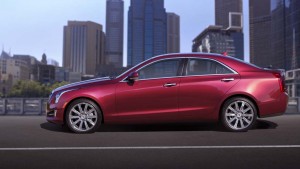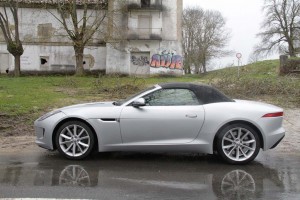For more than a century, steel has been the heavy lifter of the auto industry. It’s strong, durable but, yes, enormously heavy. And that’s a big problem for an industry that will soon have to roughly double the mileage of the typical vehicle.
So, considering every 100 pounds you cut from the average automobile equals about 1 extra mile per gallon, it’s no wonder manufacturers are frantically looking for alternatives that can shave mass. There are a number of options, including ultra-light and super-strong carbon fiber, as well as lightweight aluminum. But don’t rule steel out yet, providers insist.
Who will win? Steel and aluminum proponents each make some strong claims and the likelihood is that there won’t be a single solution. The good news, is that this is a duel where consumers will likely come out on top, whatever the winning side.
A new report by the U.S. Aluminum Association contends the metal can help makers shed more than 40% of the weight when compared to a typical steel vehicle body, boosting fuel economy by 18% when you add in so-called “secondary savings.” In other words, cut the weight of the vehicle and you can reduce the size of its engine, downsize its brakes and suspension, and so on.

Cadillac stuck to steel for the new ATS and still has the lightest vehicle in its segment, it claims.
“This study reinforces that aluminum is the material of choice to reduce body mass and boost fuel economy – which consumers list as their primary concern when buying a new car or truck,” says Randall Scheps, the chairman of the association’s Aluminum Transportation Group – and global marketing director for Alcoa.
Aluminum has made significant gains in recent years and the average 2013 model uses about 340 pounds of the lightweight metal – making it second only to steel. A recent study by Ducker Consulting, funded by the association, suggests that could grow to 550 pounds by 2025 – the same year the U.S. Corporate Average Fuel Economy, or CAFE, standard jumps to 54.5 mpg.
Proponents can already point to major gains, such as the 2014 Range Rover, which shaved as much as 700 pounds in U.S. trim by switching to an aluminum body and platform. Ford, meanwhile, is reportedly looking at mass savings of up to 750 pounds by migrating to aluminum for the next –generation F-Series pickup.
Alcoa is so optimistic about the trend that it has invested $300 million in its Davenport, Iowa plant which focuses on automotive applications, and it is “already in discussions of what the next expansion phase will be,” Scheps said during an interview with TheDetroitBureau.com.
Not so fast, steel makers contend. Reports of that time-tested material’s demise have oft been repeated, says John Surma, CEO of U.S. Steel, noting an article dating back five decades. “It didn’t happen then,” Surma laughs. “It will not happen now.”
Steel makers have been developing an array of new, high-strength alloys that can yield thinner, lighter panels and components, in some cases matching or even beating aluminum, proponents claim.
They also note that producing steel requires significantly more energy than aluminum, offsetting much of the savings of driving a lighter aluminum vehicle. But like so much of the debate, there are shades of gray the two sides often ignore. Aluminum is, indeed, very energy intensive, but when recycled, it requires only about 5% as much energy as the raw metal.
Jaguar, with the new XF sports car, hopes to hold down energy needs – and costs – by using about 50% recycled aluminum, for example.
Aluminum is still significantly more expensive per pound than steel. On the other hand, you need less of the material. One of the challenges for the metal will be to continue closing that gap even as steel makers push down their own cost per vehicle.
The question is whether the steel industry can continue making breakthroughs that will help meet the 2025 CAFE standard, contends Alcoa’s Scheps. But in the long run, he admits neither metal will likely come out on top. “It’s push and pull and the right answer is a multi-material solution, a mix of aluminum and steel.”


Aluminum has special needs for collision repair. You have to have dedicated equipment and specific training, which equals $$.
If you look at total costs, you have to consider that as well; the insurance industry is not going to eat any extra repair costs.
Actually both claims are legitimate. Aluminum is lighter but it takes more mass to achieve the same strength. High strength steel has more strength but it has higher mass than aluminum. Both cost significantly more than normal sheet metal but they both have advantages in certain areas. Composites offer the best weight/strength but the cost is exponentially higher but coming down as more car makers start using these.
While aluminum does require some better repair techniques than crude workmanship that many body shops employ, it’s certainly not beyond reason nor of any real significance. In addition high strength steel structures also require special repair procedures as do crush zones to function as originally designed.
Insurance companies do whatever improves their bottom line even if a violation of law or the insurance policy. Since it will cost virtually the same to repair either structure if done properly, it should not matter to the insurance industry as they will weasel out of paying all that they can.